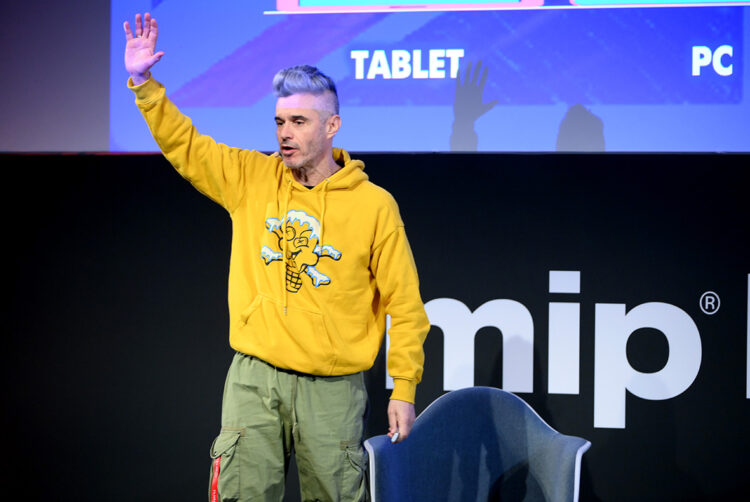UK has entered the ‘great media war’, says Evan Shapiro

Forget the streaming wars — it’s now the “great media war”, analyst Evan Shapiro proclaimed at Mip London on Wednesday.
“The streaming wars are over. Netflix won. Congratulations,” Shapiro, known as a “media cartographer”, joked. The fact the platform is now moving into sports — a traditionally linear TV patch — would suggest the landscape is much more complex.
Using Barb data, his analysis of UK viewing habits for 2024 would not, at first glance, paint a rosy picture for broadcasters.
The BBC and ITV are down on viewing share in recent years when looking at both TV-only and four-screen (TV, phone, laptop and tablet) data. For ITV in particular, this is despite the broadcaster having the biggest show last year (Mr Bates vs The Post Office).
Meanwhile, Shapiro found that, while the BBC reigned supreme when looking at viewing for the overall population, YouTube dominated four-screen viewing for 16-34s as well as TV-only and four-screen viewing for 4-15s. For TV-only viewing among 16-34s, YouTube was second behind Netflix.
He noted that the UK has an older-than-average population (58% are over the age of 35), meaning its viewing habits skewed towards those of older people. However, younger people’s digital-led viewing habits stay with them as they age — meaning YouTube’s dominance is only likely to maintain and grow.
In addition, Channel 4 has found that when it began rolling out content on YouTube, including full episodes, viewing on that platform went up dramatically. It’s a strategy that ITV has also recently adopted.
Broadcasters strong on co-viewing
But the story is not so straightforward, argued Barb CEO Justin Sampson, who joined Shapiro on stage during his session.
First of all, the content sometimes dictates the platform. Citing the Premier League, Sampson suggested that, for the two biggest teams in viewing terms, Manchester United and Liverpool, the audience is roughly the same whether a match is on Sky Sports, TNT Sports or Amazon Prime Video.
Channel 4 has also found that its foray into YouTube has not cannibalised its VOD audience.
Meanwhile, co-viewing (a key metric for advertisers to understand how many people they are truly reaching) on YouTube is not as high as on VOD, Sampson highlighted. On ITVX the co-viewing factor averages 1.45-1.5, compared with 1.34 on YouTube.
That said, Sampson conceded that YouTube is increasingly viewed on a TV set — Barb data shows that 41% of all YouTube viewing was on a TV set in 2024. Shapiro added that global viewing of YouTube on a TV has risen 70%.
For this reason, Barb announced separately on Wednesday that it will begin reporting TV set viewing of YouTube channels as it seeks to understand this shift further.
Fragmentation is the keyword
Moreover, “the data hides interesting stories for established TV players” when it comes to youth audiences, Sampson argued.
The Traitors, for example, attracted 21m in its latest season, of which nearly 4m were in the 16-34 demographic.
“Broadcasters have demonstrated a real agility in streaming,” acknowledged Shapiro, who suggested their continued strength could be due to the UK’s older population and the history of free public-service broadcasting in Europe.
Sampson pointed to other factors, including household broadband speeds and whether there’s a preferred platform, such as a subscribed satellite service. “Habits die hard, even for young people,” he said.
For Shapiro, this means it’s more “a fragmented media story” rather than a streamers versus broadcasters debate. Citing Channel 4’s YouTube and VOD strategy, he suggested the key for content makers is to understand there are two ecosystems operating in parallel.
“We have to fly the plane and build the new plane at the same time,” Shapiro concluded.




